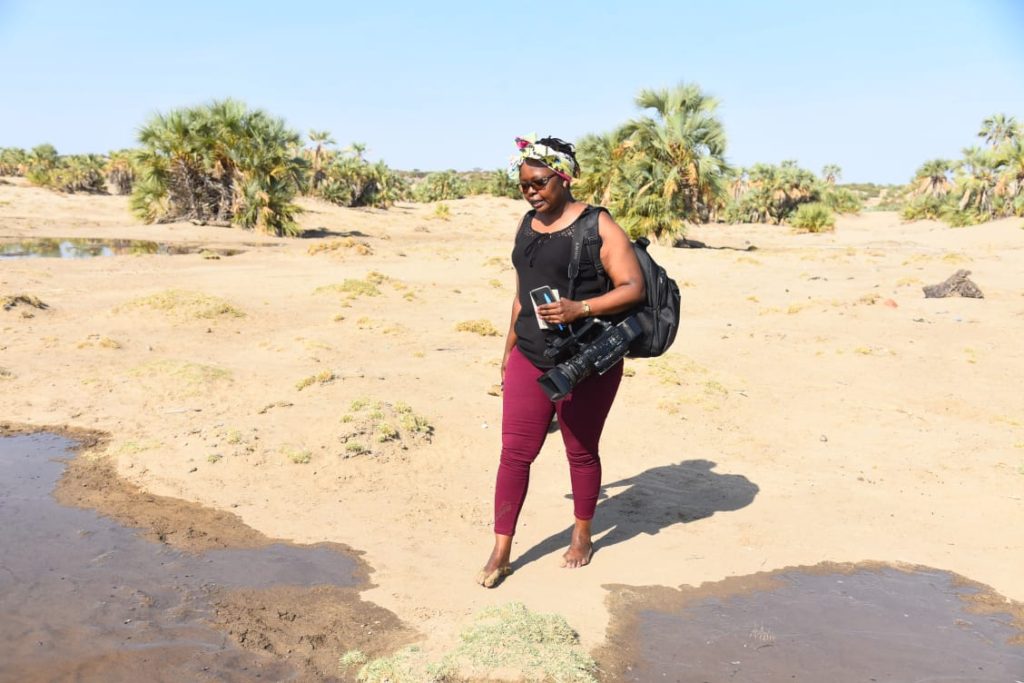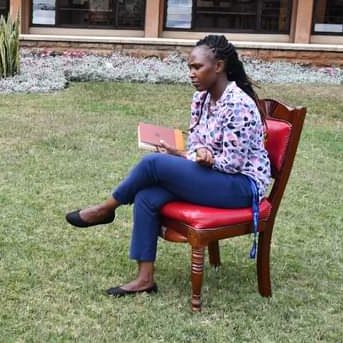Groundbreaking Workshop on AI and Technology-Facilitated Gender-Based Violence at AWiM24
Trending
Sunday May 25, 2025
Trending

“Journalism is not a crime” is often the rallying call against the injustice of the persecution of reporters the world over. But crime journalists can’t ply their trade without getting into the thick of crime, metaphorically speaking. This, however, is often used to perpetuate biases that keep women out of the crime desk. A cursory glance at the staff of major media houses in Kenya reveals that few women have charted into the murky waters of crime reporting. AWiM News spoke to three about their experiences on the crime beat.
Stella Cherono’s foray into crime journalism was accidental. After joining the Nation Media Group in 2010, she was posted to Kisumu as a correspondent, reporting on health and environment until 2013. She was then transferred to the group headquarters in Nairobi and assigned to the weekend desk.
“It was challenging because I had not established enough contacts in the city. The courts and police stations were low-hanging fruits, so I started filing stories from the crime and court beats,” she said.
Cherono soon learnt that follow-ups generated longer, better and more interesting stories, and she began to go beyond the initial news reports. As she developed contacts within security forces, she began to work on investigative features touching on corruption, extrajudicial killings and other human rights violations. She is now one of two women who hold regional editor positions at the Nation Media Group, having risen up the ranks from reporter, to overseeing local reporting in seven counties that make up the media house’s South-rift Region.

Joseph Muraya, the Secretary General of the Crime Journalists Association of Kenya (CJAK), which was established last year, told AWiM News that only 10 (20 per cent) of their members are women. This is something CJAK, whose mission is to promote professional and accountable journalism in security and crime reporting, hopes to change. Muraya said that plans are underway to mentor and get more women on board, with a view of having at least 50 women crime reporters in the association. However, he said that a major hurdle for women is institutionalised bias.
““Editors have little or no confidence in women as crime reporters; they fear that women are not able to deal with security players or even criminals. We believe women are equal to the task, that’s why we are trying to eliminate this bias,” he told AWiM News.
“Editors have little or no confidence in women as crime reporters, but we believe women are equal to the task.”
Immaculate Akello, a crime reporter with the Star, echoed Muraya’s sentiments. She has been writing about crime and human rights and social justice from the onset of her career at the Standard Group newsroom in 2015.
“The assumption is that women are afraid of blood and afraid of being exposed to violence, but having been in this field for five years, I have realised that men hate the terror scene just as much as women do. It’s just that society emphasises the narrative that women are physically weak and need constant protection.
“Just like men, women don’t deliberately expose themselves to violent scenes. You don’t have to man up for this work. All crime journalists, men and women, should exercise caution and vigilance at all times,” she told AWiM News.
“A journalist on any beat is at risk. Once you know the red flags and potential risk areas, you know to tread carefully. Being a crime reporter helps you be alert always,” she added.

Amina Wako, who got into crime reporting after winning an investigative journalism story grant and mentorship from Transparency International, agreed that stereotyping by male colleagues is a major hurdle.
“They say we are emotional and fearful. As a woman, you have to prove that you are as good as your male colleagues,” she said, adding that while it’s not easy, just like on other beats, passion and love for the job makes work easier.
Cherono told AWiM News that the biases against women on the crime beat are unfounded, because the challenges faced by journalists on the crime desk are not unique to women.
“The hurdles I face are not exclusive to women. The trauma of coming face to face with death nearly every day and threats from many quarters are challenges that all crime reporters face, whether male or female,” she said.
Nevertheless, said Cherono, perceptions that make editors hesitant to assign women to the crime beat are changing. When she became a crime journalist in 2013, there were hardly any other women on board.
“Now we have a couple of women doing the job, and they do it well,” she said.
All three crime reporters told AWiM News that mental wellbeing is a constant challenge.
Cherono said the robust mental wellness support system set up by her employer provides access to a counsellor who helps her deal with trauma.
“Over time, I have learnt that emotions, especially those arising from trauma, pile up and explode unexpectedly. I have been consistent with counselling even when I do not feel the need for a session,” she said.

She also found ways of protecting herself from physical harm.
“To manage threats, I have learned to be conscious of my surroundings and reduce my exposure. I also keep police officers close. I am also part of the Independent Medico Legal Unit (IMLU) family; they have a panic button app where you can report threats. They support journalists and human rights defenders to ensure we are safe,” she said.
Wako, who shares an employer with Cherono, says that counselling helps her stay sane.
“Journalists are human beings with emotions; sometimes I have panic attacks and mental breakdowns. Every time I feel distressed, I speak to a counsellor. This has helped me stay sane,” said Wako, who has been on the crime beat for three years now.

Akello takes care of her mental health through a programme run by CJAK, where she is a member.
“It’s the best thing that ever happened to crime journalists. All journalists should have this support. The pressure we face at work needs regular debriefing and de-stressing. I didn’t know how to take care of my mental health. At one point, I lost some relationships and the ability to empathise. I was so withdrawn and I often downplayed other people’s pain like I did my own. I would often say; I’ve seen worse, but I am learning to handle it better now,” she explained.
CJAK chair Muraya said that sexual harassment from news sources and subjects is another fundamental barrier to women pursuing careers in crime journalism.
“I haven’t faced sexual harassment from my colleagues, but some news sources expect sexual favours in exchange for information. It’s good to draw the line early enough so that sources decide whether they are willing to share information without expecting anything in return. Also, maintaining professionalism helps a great deal,” Akello told AWiM News.
Cherono, a seasoned reporter, said that she experienced sexual harassment in her early days in the field, but not any more. Wako, on the other hand, said that she feels powerless to do anything about sexual harassment: “There are battles you don’t fight, for your own good.”
Threats and challenges aside, if Cherono had to redo her career, she would train as an investigating police officer first because it would help her handle crime reporting better.
“There is nitty gritty about crime scene investigation, scene dimensions, ballistics, cybercrime, cues, clues and many other things I wish I knew more about,” she said.
Akello said that building a strong network of diverse sources – ordinary people and authority figures alike – ensures guidance for moves and timely advice where needed.
“Something inside of you is bolder than you know; reporting on crime awakens it. You’ve got to try it to know this,” she said.
Cherono gave three tips for female journalists seeking to join the crime beat: If men can do it, we can also do it; stand out from the crowd; fear is a globally recognised killer of dreams.
We’re not gonna spam. We’ll try at least.

Copyright 2020. African Women In Media
Copyright 2020. African Women In Media
Recent Comments